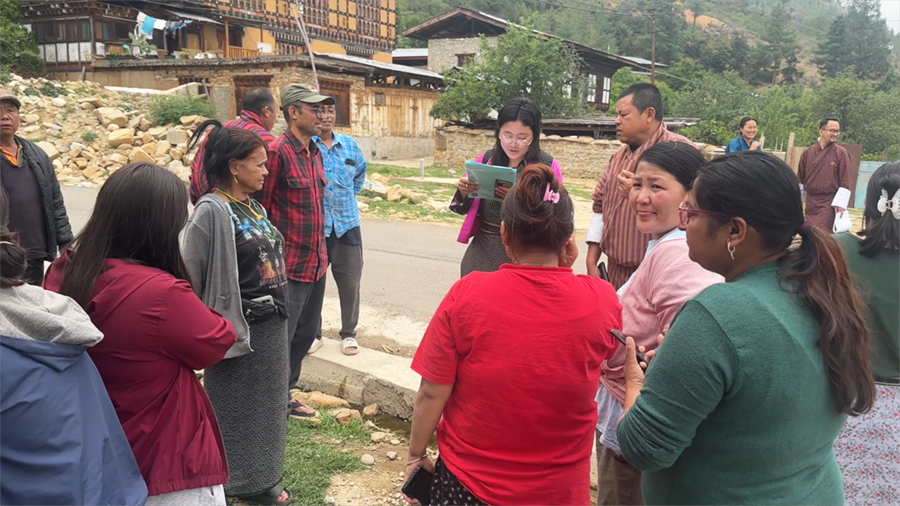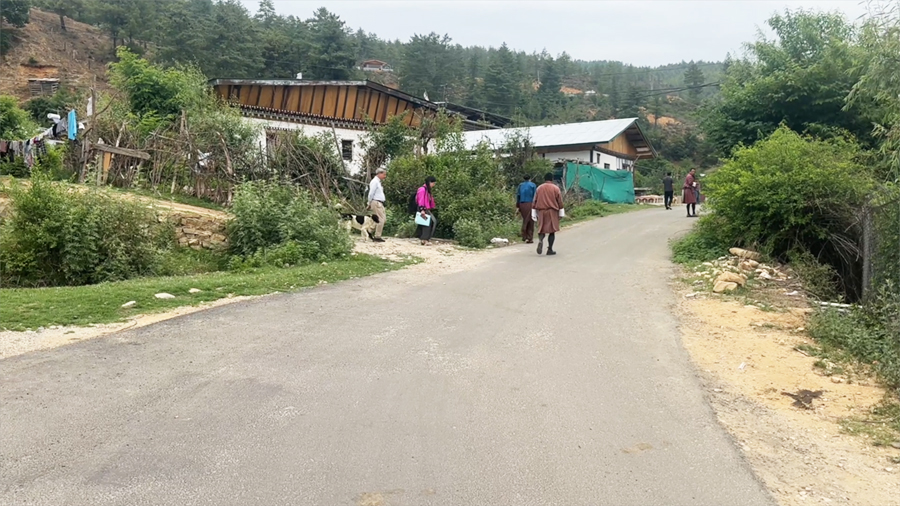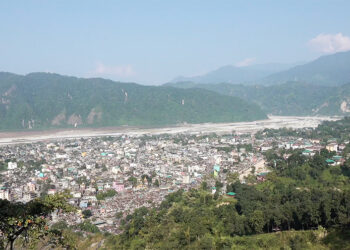
If the Pachhu swells and floods, 14 locations in Paro along the river have been identified to be at risk. According to experts, an outburst of the Karma Tsho at the base of Jichu Drakey, or the rain-fed tributaries could cause a flood along the Pachhu. To minimise the impacts and rescue lives during such disasters, the Paro District Administration along with the Department of Disaster Management, the National Centre for Hydrology and Meteorology, and the Japan International Cooperation Agency, carried out a mock drill that simulated a flood along the Pachhu, last Friday.

These locations, marked in red, have been identified to be highly vulnerable to the potential Pachhu flood.
The settlements marked in red include villages, resorts, a school, Tshongdue Town, the Paro International Airport, and other government buildings.
Three early warning devices will track changes in river volume along the Pachhu basin, beginning at Gunyitsawa, and automatically forward the data to the National Centre for Hydrology and Meteorology server.
Based on its data, the centre will notify a social media group comprising all relevant officials and alert the people of the threat.
Furthermore, in the worst-case scenario, the centre will disseminate a second alarm message or an evacuation message. This strategy is expected to provide people enough time to prepare and evacuate.
Dorji Chedup, Paro’s disaster management focal person said, “As per JICAs findings, in the worst-case scenario, the water level of Pachhu will rise up to a meter’s height and the velocity of the river will be also one and half meter per second only. It is not so much alarming. However, to be safe we advise the people that, in such case, to climb up to higher floors if they have multi-storey house, if not climb to higher grounds. This is as per the recommendations from the JICAs experts.”
“In such cases people usually panic and make the matters worse. If people are aware about what to do in emergencies the casualty and impacts will be minimal. That is why we prioritize mock drills as one of the key exercises for preparedness,” said Choki Tashi, the deputy chief programme officer of Department of Disaster Management.
According to reports, in the summer of 2012, the Pachhu swelled and flooded and people were evacuated to higher grounds. But they said they were unprepared back then.
Langten, who lives in Paro said, “That time we were unaware about what to do if there was a flood and we didn’t know what to do. People panicked and ran up and down, some were running towards the river also.”
Similarly, Sangay Wangchuk, who is also a resident of Paro said that they were able to learn how they should respond during disasters through the mock drill . “We are told that we will be given three different messages from officials to prepare, evacuate and return. That time we will be able to rescue some of our valuables and save our lives. This was not the case during the 2012 flood.”
This exercise is a part of JICA’s ‘Project for Capacity Enhancement of Meteorological Observation, Forecasting and Flood Warning, for Disaster Preparedness and Response in Thimphu and Paro River Basins’.
The goal is to make communities more resilient to weather disasters.
The project will be completed by the end of this year.
Namgay Wangchuk, Paro
Edited by Phub Gyem










